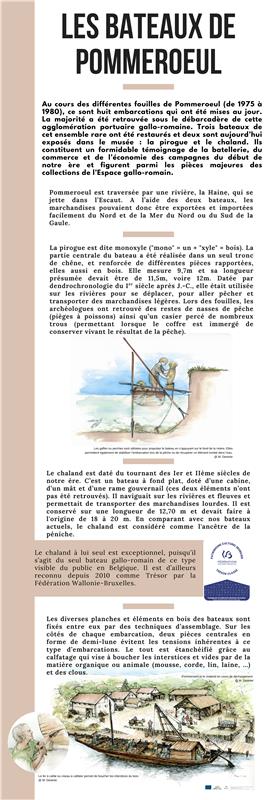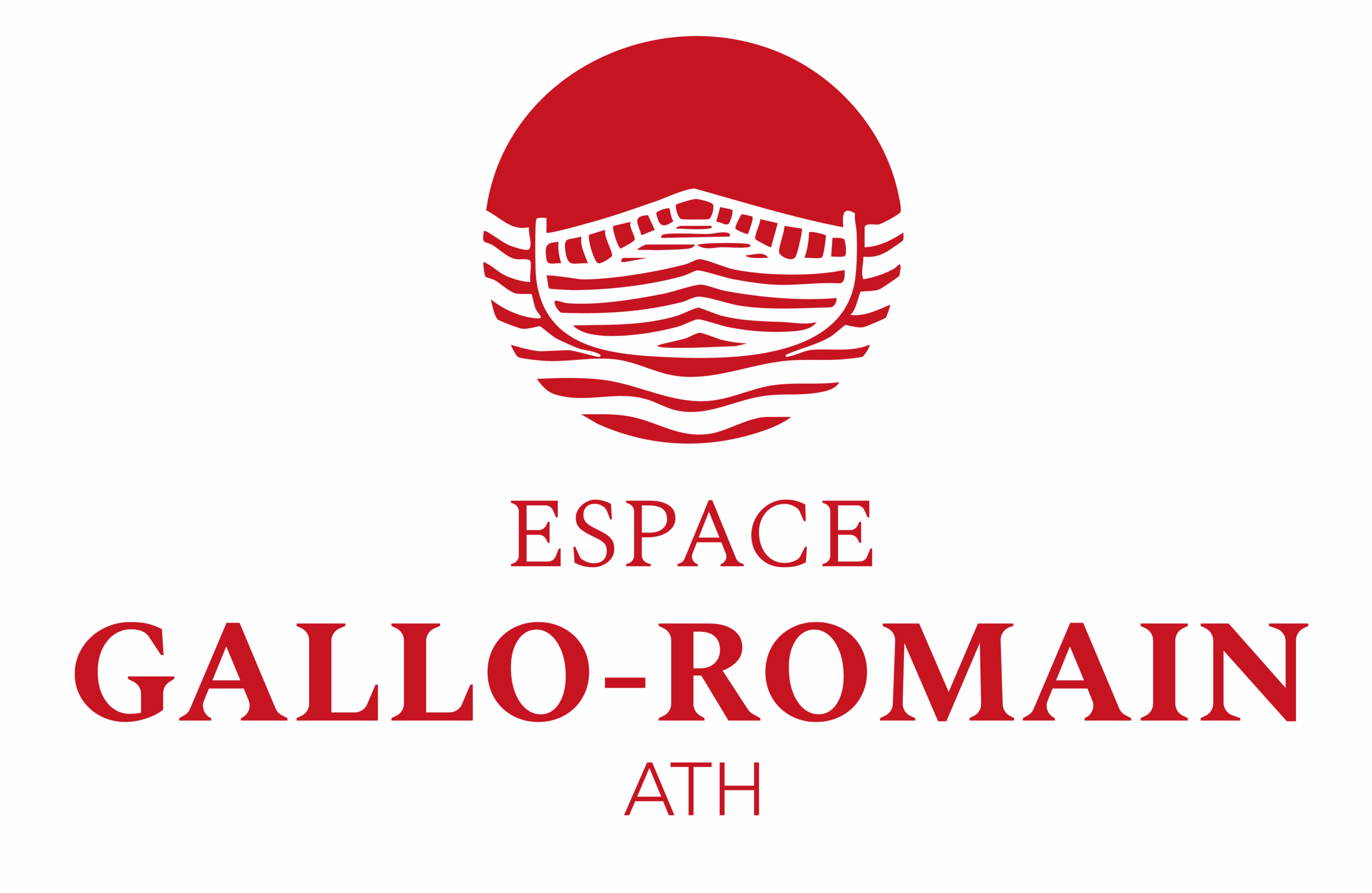During various excavations at Pommeroeul (from 1975 to 1980), eight vessels were uncovered. Most were found beneath the dock of this Gallo-Roman port settlement. Three of these rare boats were restored, and two are now on display in the museum: the dugout canoe and the barge. They provide remarkable evidence of inland navigation, trade, and the rural economy of the early Roman era, and are among the highlights of the Espace gallo-romain’s collection.
Pommeroeul is crossed by the river Haine, which flows into the Scheldt. Thanks to the two boats, goods could be easily exported and imported from the North and the North Sea or the South of Gaul.
The dugout canoe is described as monoxylous (“mono” = one + “xylos” = wood). The central part of the boat was carved from a single oak trunk and reinforced with additional wooden elements. It measures 9.7 m, and its estimated original length was 11.5 to 12 m. Based on dendrochronological dating, it dates to the 1st century AD. It was used on rivers for transport, fishing, and carrying light goods. During the excavations, archaeologists discovered remains of fish traps as well as a perforated wooden box (used to keep the catch alive when submerged in water).

The barge dates to the turn of the 1st and 2nd centuries AD. It is a flat-bottomed boat equipped with a cabin, a mast, and a steering oar (the latter two were not recovered). It sailed on rivers and larger waterways, used for transporting heavy goods. The preserved section measures 12.70 m, while the original length is estimated at 18 to 20 m. Compared to modern vessels, the barge is considered the ancestor of today’s canal barges.
The barge is exceptional in its own right, as it is the only Gallo-Roman boat of its kind visible to the public in Belgium. Since 2010, it has been officially recognized as a Treasure by the Wallonia-Brussels Federation.
The various planks and wooden elements of the boats were joined using assembly techniques. On each side of the boat, two crescent-shaped central pieces help prevent the stresses typical of this type of vessel. The entire structure was waterproofed through caulking, which involved filling the gaps and joints with organic or animal material (moss, rope, flax, wool, etc.) and nails.
Photos credits
Setting poles are used to propel the boat by pushing against the riverbed. They also help stabilize the vessel during fishing or retrieve something that has fallen into the water.
@ M. Destrée
The caulking iron or chisel is used to fill gaps in the wood.
@ M. Destrée

Recent Comments